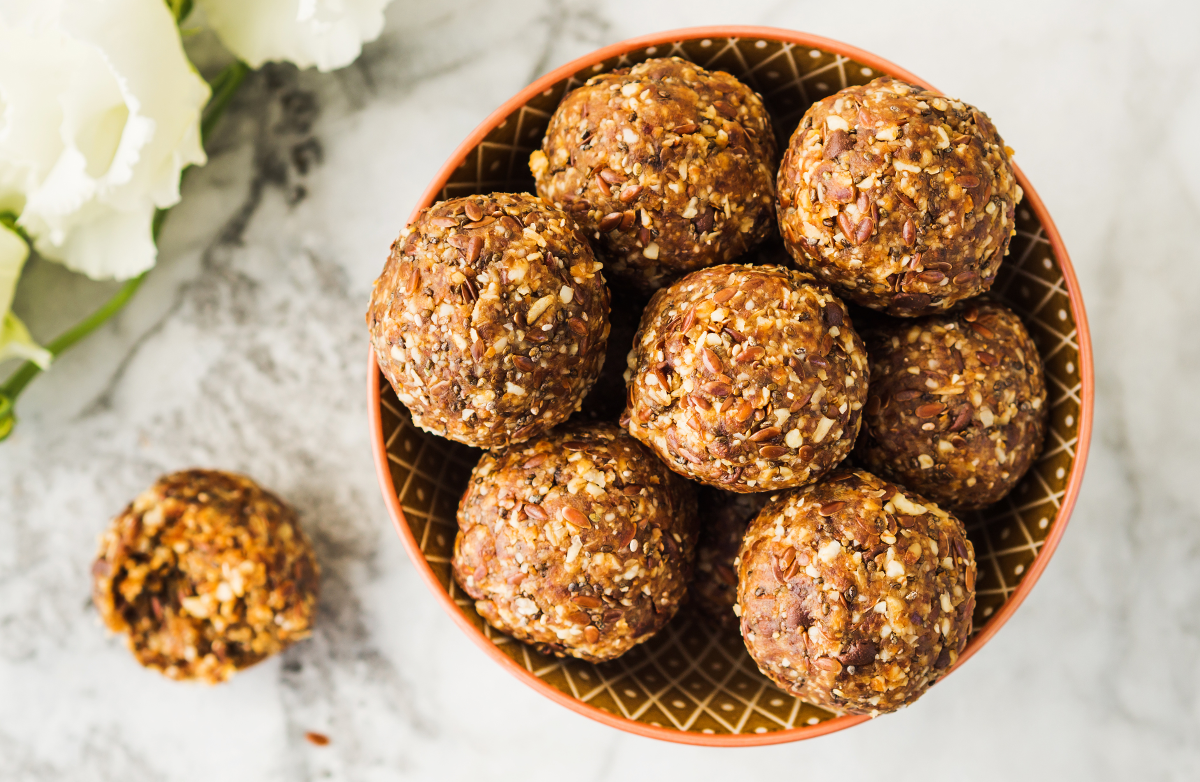How many decisions do you make in a typical day? The number is probably a lot higher than you think. In our fast-paced, time-crunched world, new choices emerge by the hour, or even by the minute. You question what to wear, what to eat, how to handle a difficult conversation, whether to accept an invitation, what gift to buy for the birthday party—plus countless decisions you make without even realizing it. In a study by Cornell University, researchers found that people made 220 more food-related decisions than they had estimated.
While it's good to have options, too many can result in a phenomenon called "decision fatigue." In a nutshell, the more decisions we make, the less likely we are to make good ones. Not even judges are immune—in one study, the percentage of favorable legal rulings dropped steadily throughout a day of parole hearings.Decision fatigue can extend to all areas of life, including fitness and nutrition. Let's say you spent 10 hours at the office, plowing through dozens of work-related decisions. When you finally get home, you know it would be in your best interest to go to the gym and prepare a healthy dinner, but your tired brain would prefer to watch Netflix and order pizza.
As an integrative nutrition health coach for Simply Health Coaching, Liza Baker find that choices are most difficult for those who fear the outcome of their choices. "While some big decisions—marriage, switching jobs or moving across the country—merit a lot of pondering, most small decisions will ultimately not make a huge difference in the end. In fact, where you find yourself agonizing is very often a key to the real issue, masquerading as a difficult choice."
You don't have to resign yourself to the path of least mental resistance. Armed with some smart strategies, you can shake off decision fatigue and make clear, constructive choices for optimal wellness.
Make daily decisions the night before.
If you wait until the alarm goes off at 6 a.m. to decide whether to work out, your tired brain will most likely choose an extra half-hour in bed. The same goes for packing a healthy lunch and prepping for the next night's dinner. By making those daily choices ahead of time, you'll be more likely to complete them.
"Being proactive about a plan reduces the odds of it falling through," says fitness instructor Kat Haselkorn. "If you struggle to climb out of bed for a morning workout, set out your exercise clothes the night before so it's easy to race out the door. If you take two minutes to plan, you won't be faced with the arduous task of picking out an outfit when your brain hasn't even turned on yet."
Speaking of workout clothes: If style is important to you, invest in sets that eliminate the need to pair separates. When purchasing her tennis clothes, nutrition expert Toby Amidor buys matching tops, bottoms and sports bras, distilling three decisions down into one.
Plan dinners a week (or month) in advance.
When you're in the thick of a chaotic workweek, it can be tough to come up with a healthy dinner idea not just once, but five times. Instead, set aside 20 minutes—ideally on a day when your decision-making skills are strongest—to plan your weekly menu. It doesn't have to be fancy; try to get an idea of what you'd like to eat for dinner each night. "When you've just gotten home from work and you're exhausted and starving, it's not the time to make a decision," says fitness trainer and nutritionist Sarah Bright. "When you have a plan, you'll have time to thaw meat and get ingredients."
Jessica Pantermuehl, nutritionist with Livewell Collective, plans an entire month's worth of dinners. She starts by writing out 12 simple, healthy meals, then chooses just three of them to cook the following week. "On Monday, make enough for a full meal of leftovers for Tuesday, and on Wednesday, make a new dinner with enough for Thursday too, and so on," she suggests. "Each weekend, choose another set of three meals and repeat."
Pantermuehl is also a fan of using food themes or patterns to simplify decision-making. For example, you could cook Italian food on Mondays, Mexican on Tuesdays and Indian on Wednesdays. Alternately, you might plan for Meatless Mondays, fish on Tuesdays and beef on Wednesdays. "Creating these repeating patterns obviates the need for an entirely new decision each night, while still providing for flexibility and variety in your diet," she says.
Simplify mornings with easy breakfasts.
In the race against the morning clock, there's usually little time for decision-making. The simple act of having a nutritious breakfast prepped and ready to go can pave the way for a smooth, healthy day.
"Start by choosing just three healthy breakfasts you know and like," suggests Pantermuehl. "For example, yogurt with nuts and berries, eggs with avocado and tomatoes or a simple green smoothie with hemp protein. Put these on rotation for the next two weeks and see if it helps your mornings become less hectic." Health coach and author Lorraine Miano is a fan of mason jar breakfasts, using this method to prepare overnight oats, Chia puddings and smoothies.
Practice mindfulness.
When our brains are overflowing with daily worries and to-do lists, we're hard-pressed to find the focus and clarity we need to make important decisions. To help clear the mental clutter, try carving out periods of mindfulness through meditation or relaxation techniques. According to research published in Psychological Science, just 15 minutes of daily focused-breathing meditation can help people harness the cognitive energy to make smart choices.
If the idea of sitting cross-legged in a quiet room doesn't mesh with your multitasking personality, grab your sneakers and head out for a soul-soothing stroll. The simple act of meditating while walking can help banish brain clutter and relieve stress, putting you in prime decision-making territory. (And as a bonus, you'll burn calories while quieting your mind.)
Plan workouts in advance.
Not sure whether to work out at home or make the trek to the gym? Sarah Anne Kelly with MomTrainer.com recommends taking a hard look at your current lifestyle. Do you need to have childcare? Is the gym far away? Can you create a motivating space without distractions in your own home for exercise? "Select the best option that fits your life as it is right now," says Kelly. "Find the best hour of the day to exercise and see where you are most often. It's a personal decision, and has to make the most sense for you."
If you've chosen a gym, don't waste precious time weighing the pros and cons of the treadmill versus Zumba class. Bright recommends planning your workout before you arrive. "Without a plan, you'll end up doing exactly what you've always done, and end up where you've always been," she says.
Kelly advises her clients to get a guided tour before their first workout. "You'll get an idea of what is considered 'proper attire,' find out where everything is, and can ask about what classes or trainers are the best fit for your goals. You can also ask about peak times of day if you're looking to avoid the crowds," she adds.
If you struggle with planning workouts, Bright suggests trying a group fitness class, where the instructor will make most of the decisions for you. Amidor schedules three or four Pilates classes each week, usually booking two or three weeks in advance. You can also sign up for sessions with a personal trainer, who will provide an exercise road map for you to follow so you don't get lost.
Narrow down your nutrition options.
Have you ever gone into "analysis paralysis" while perusing the organic section of the grocery store? Sometimes, less is more. If you're trying to lose weight, Bright recommends minimizing your food options, at least in the short term. "Try to limit yourself to two or four options for each meal and snack," she suggests. "Instead of browsing every food item in your house, it's far easier to decide between one of two things. Pick a few healthy meals that fit your needs and stick with them."
When it comes to nutrition, Kelly tells her clients to keep it simple. "Eating the same things every day makes it easier to stick with a healthy habit, but this doesn't have to be boring," she says. "Sticking with a routine of cereal for breakfast, salad for lunch, fruit for dessert and a selection of vegetables and lean proteins for dinner can be easily mixed up for variety without the guesswork of what to prepare every day."
Dining out can be tricky, especially at restaurants with menus that could double as novels. These days, most places post their menus online. Before heading out—and ideally at a time when you're not hungry—Bright suggests going to the restaurant's website and selecting your entrée and sides. Once the decision is made, you won't even have to open the menu when you arrive.
Turn decisions into commitments.
Once you've made a decision, don't put yourself in the position of having to consciously repeat that choice over and over. For instance, instead of waking up every Monday, Wednesday and Friday and deciding to work out, just decide once that you're going to work out on those days every single week, and then make a commitment to do so. The same goes for nutrition: Decide that you're going to cook meals at home four nights a week, and then commit to that plan.
Keep the mundane decisions to a minimum.
If you find yourself locked in a stalemate between the blue or pink running jacket, or if you're spending far too much time deliberating whether to order the chicken salad or the stir-fry, you might be frittering away valuable mental energy that could be expended on more important dilemmas. Ask yourself, "Will the outcome impact my health, happiness or ability to reach my goals?" If the answer is no, move on. And, as Miano points out, it's not the end of the world if you make a wrong decision once in awhile.
Ultimately, the most important decision you can make for your wellness is to embrace a healthy lifestyle. By using these strategies, you'll be better equipped to tackle the myriad of smaller decisions that follow. "Nutrition and exercise choices start out as decisions and, over time, become habits—and habits are easy," says Bright.













